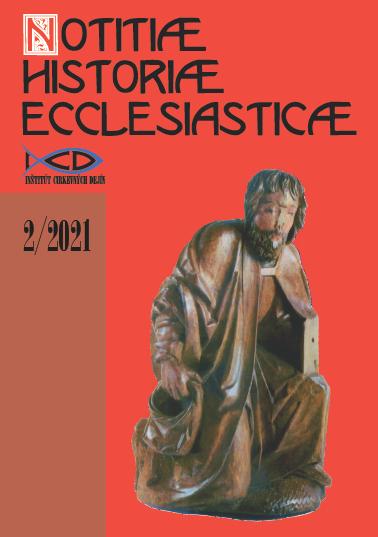Od posvätnej služby pre liturgiu po zbierkový predmet. Muzealizácia posvätného
The Path of a Sacramental Object from Liturgic Service to Collection Item in a Museum. Musealisation of the Sacred
Author(s): Alena PiatrováSubject(s): Christian Theology and Religion, Museology & Heritage Studies, Visual Arts, Theology and Religion, Systematic Theology
Published by: VERBUM - vydavateľstvo Katolíckej univerzity v Ružomberku
Keywords: Action K; confiscates; presenting; restitutions; sacral art;
Summary/Abstract: Turbulent historical events have marked the church and monastery treasuries around the territory of today's Slovakia. A vast set of valuable art pieces, including goldsmith products, have gotten into the collections of Hungarian museums in the 19th and the beginning of the 20th centuries. Up until the half of the 13th century, the treasures were devastated by the incursions of the Tartars, later the Turks, in the 16th century radical protestant supporters, or the treasures ended up as confiscates or they were melted during various war conflicts and Josephine reforms. The last drop was the Communist state order, especially in 1950 there were the so-called Actions 'K' and 'L'. The goldsmith liturgic objects, precious historical paraments, and visual art pieces that had survived the previous destruction have been transferred to the collection points of the Slovak Christian fund. The fund gradually distributed the confiscated cultural heritage owned by the Church into renowned Slovak museums and galleries to become their collection items. How do Slovak museums deal or have dealt with this confiscates in case the religiouses societies claim restitution? Are fraternities interested in resolving the ownership relations with museums? Where do the restituted objects end up when the issue is resolved positively? Is the museum community prepared to see the injustice committed upon the Church in the past? And where is the ethical line between the right of the beneficial owner (custodian), who has in many cases invested in saving the object, and the lawful right of the failed owner? Does the Slovak Catholic Church, especially religiouses societies, have expert capacities and finances to preserve their cultural heritage?
Journal: Notitiae Historiae Ecclesiasticae
- Issue Year: 10/2021
- Issue No: 2
- Page Range: 65-81
- Page Count: 17
- Language: Slovak

